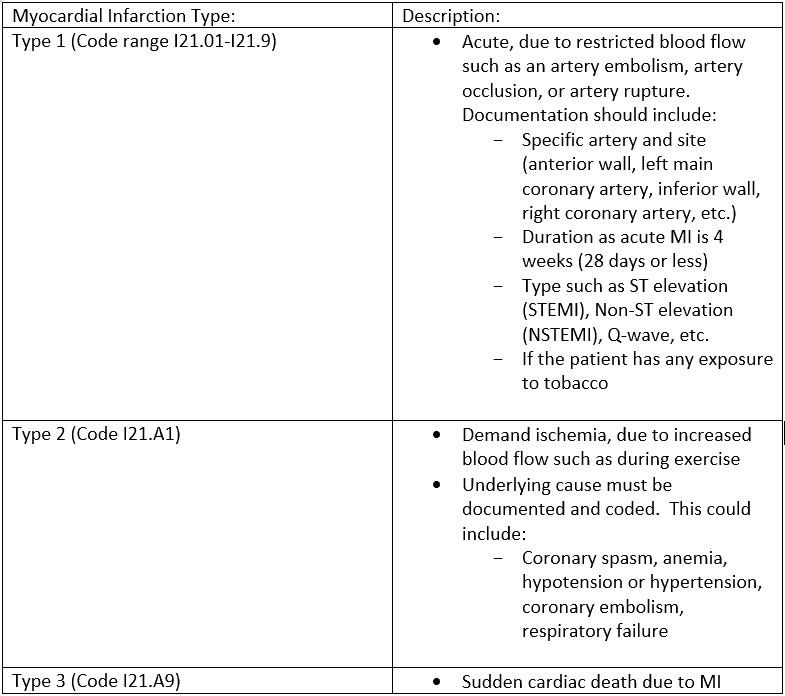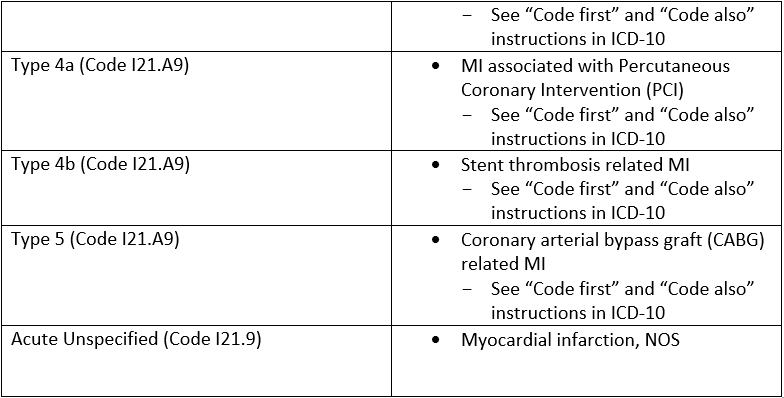Inside Angle
From 3M Health Information Systems
Myocardial infarction coding is good for the heart
I can’t speak for anyone else, but I find reading documentation for Myocardial Infarctions (MI) and coding from Chapter 9 in the ICD-10 codebook to be stressful and sometimes anxiety inducing. Never being one to run from my fears (at least not this one!), what better way to face my MI documentation and coding worries than to make it the topic of my latest blog.
Coding for Acute Myocardial Infarctions has always been a challenge because physician documentation needs to include site, type and timing. In addition, myocardial infarction coding expanded in October 2017 to include a new code for type 2 MI and other types of MI. There are currently 6 types of MI that can be coded. So, what are some of the basic differences and causes of Myocardial Infarctions? Let’s break it down for a better understanding.
Physician documentation is a key element for correct coding, especially if the patient has an acute or Type 1 MI. Use of the acute unspecified code should be very limited. Educate physicians on the changes to MI coding and documentation needs. If notes are lacking the specific documentation needed to choose the correct code, always query your physician.
With the right documentation, myocardial infarction coding shouldn’t give you a heart attack.
Karla Voneschen is a coding analyst at 3M Health Information Systems.




